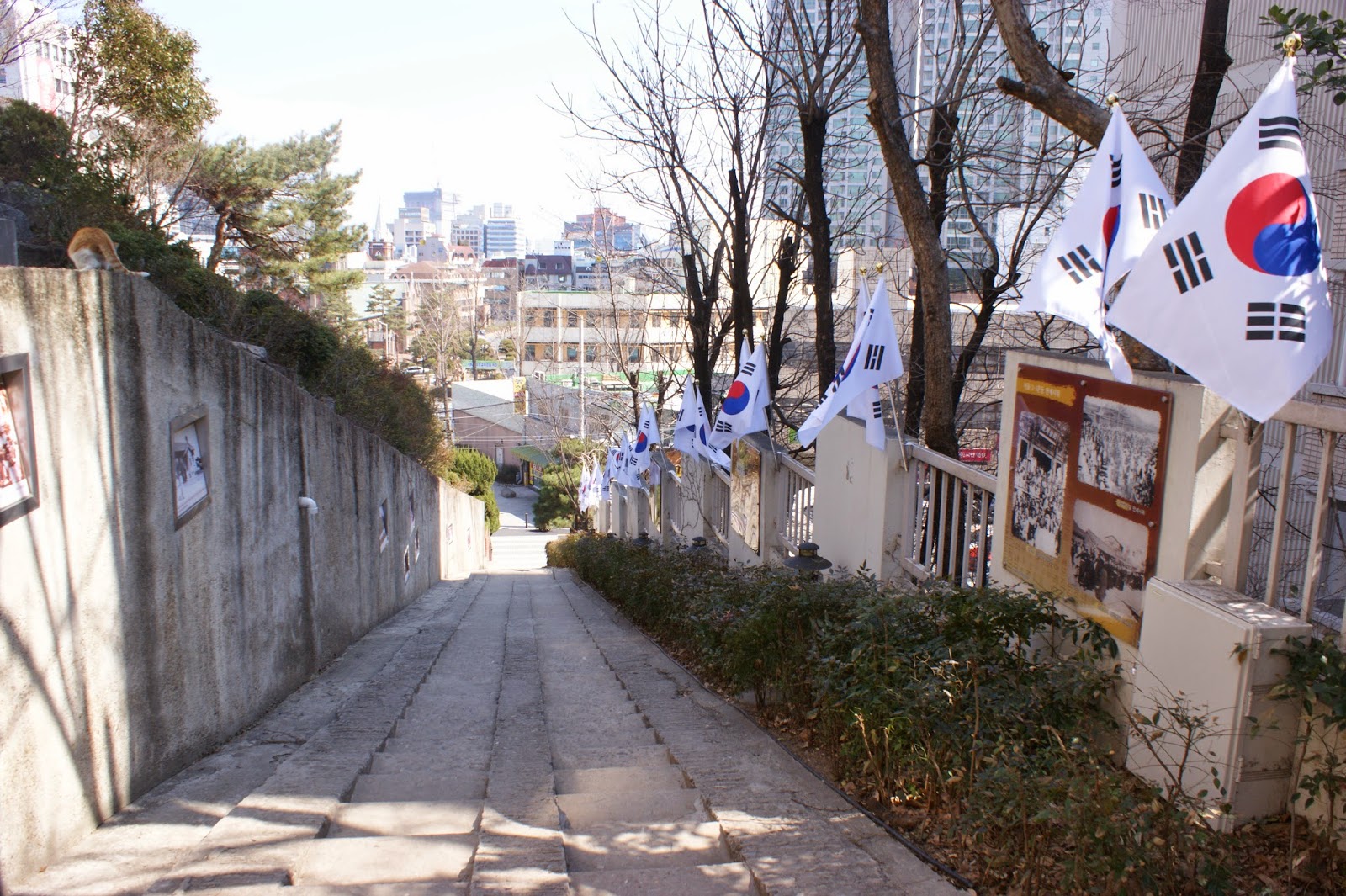By Matthew
Caracciolo
It wasn’t all that
long ago that Daegu was a small, yet important market city where farmers and
merchants would gather to sell their wares. No longer a sleepy, agricultural
crossroads, Daegu is now a buzzing metropolis that far exceeds its original
walled boundaries. It’s still possible, though, to step back in time and
experience a taste of what old Daegu looked and felt like with the Junggu
Walking Tour.
The Junggu Walking
Tour lays out five separate routes that pass culturally significant areas or
attractions within the central Daegu area. Specifically, many of the routes are
designed to highlight events that took place roughly 100 years ago under
Japanese rule, when several movements and artists were active in the area. On a
sunny, unseasonably warm February afternoon, I embarked on walking tour #2, the
modern culture alley, which circles the Yangnyeongsi area just west of
downtown.
The tour starts on
Dongsan Cheongna Hill, a bluff overlooking the city that long harbored
Christian missionaries and the medical services they provided. To get to the top, use the March First
Independence Movement Road, a generous name for a series of stairs that played
a large role in its namesake movement. To the left is the large and stately
Jeil Presbyterian Church, the first Presbyterian congregation in the city and a
commanding presence over downtown. On either side on top of the hill are old
missionary houses that delightfully combine elements of Western and Korean
architecture.
Walking down the
road to the other side of the hill, tourists can look at pictures of old Daegu
and admire (or lament?) just how much the city has changed in a century. The
pictures of Seomun Market, with its large, crowded buildings missing, are
particularly startling.
At the foot of the
hill sits the old Gyesan Catholic Cathedral built in 1902. The stained glass
windows depicting saints martyred during the Joseon dynasty in their
traditional Hanbok are worth a look. Following the trail, you come to a pair of
historic hanok houses that once belonged to Lee Sang-hwa, a poet during the
Japanese occupation, and Seo Sang-don, an activist who dreamed of recovering
Korea’s sovereignty through the Foreign Debt Redemption Movement. Faced with
the bulldozer, the two culturally-significant houses were saved from
development oblivion by a coalition of locals. Today, they form a modern
history center with great views of what houses looked like 100 years ago. In
stark contrast are the high rise apartments surrounding the complex, a gleaming
reminder of how far the peninsula has come in a century.
Turning around,
the tour leads you into the heart of the Yangnyeongsi area, a neighborhood long
devoted to oriental medicine and remedies. Wander the shops with all manner of
roots, antlers, and herbs on display. Grab an herbal tea in one of the district’s
unique tea shops. Stop inside the Yangnyeongsi Museum of Oriental Medicine for
an herbal foot bath or a comprehensive history of traditional medicine in
Korea.
The Yakjeon Samgyetang restaurant across the street is a Daegu
institution, with additional herbal ingredients used in the recipe of this
popular Korean dish. Koreans especially enjoy samgyetang in the summer, when
they believe the hot chicken soup rejuvenates their bodies in the oppressive
summer heat.
Nestled behind the Hyundai department store is the upscale Italian
restaurant Pietro, newly moved from the wealthy Suseong-gu area. Also in
Yangnyeongsi is the old Jeil church, built in 1933 after a series of smaller
buildings.
There are five
walking tours in all, each highlighting different eras in the city’s history.
Some even traverse through Jungangno, a dizzying and dynamic maze of modern
shopping, dining, and entertainment options. Also available are two themed
tours, one for night walks and one specifically focused on Christian sites.
English signage along the trails is spotty, but a free Junggu Walking tour app
has an English version and provides detailed information about each site, as
well as a map. Physical maps are also available at tourist booths along the
trail and are available in English. Devote approximately two hours for a
walking tour, longer if you want to stray into Jungango and do some shopping or
catch a movie. It would be a disservice, however, to miss out entirely on the
understated and surprising side of Daegu featured in the Junggu Walking Tour.








No comments:
Post a Comment